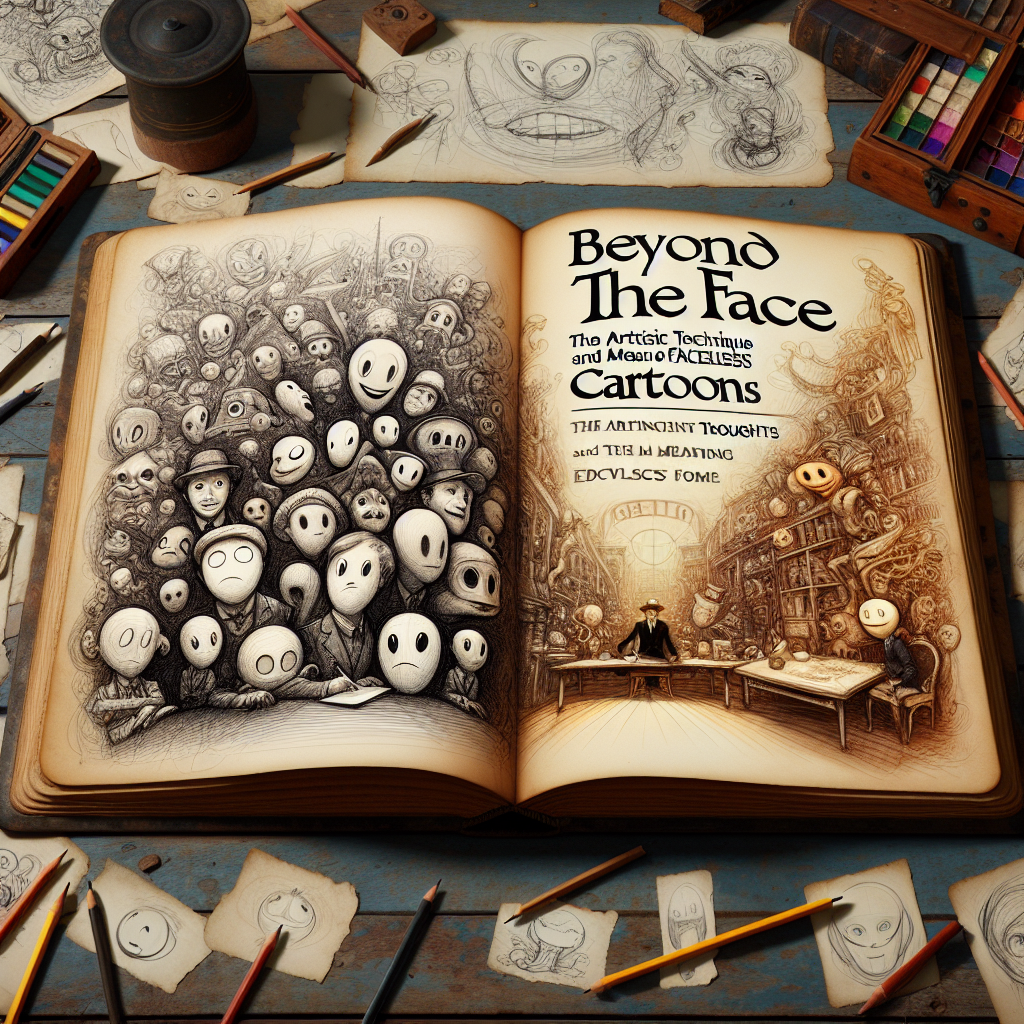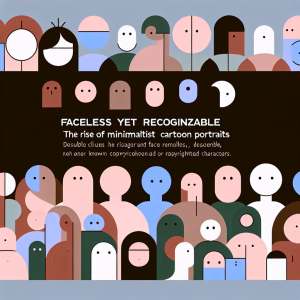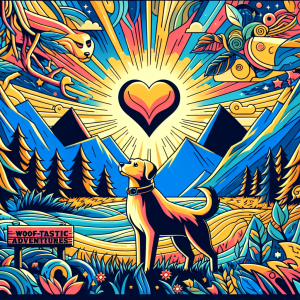Imagine flipping through the pages of a comic book or scrolling through your social media feed when suddenly a cartoon catches your eye. It’s vibrant, imaginative, and absolutely faceless! You might wonder, “What’s behind those missing features?” Faceless cartoons aren’t just the whimsy of artistic choice; they hold deeper meanings that resonate in unique ways. Let’s dive into the world beyond the face and explore the artistic techniques and significance of these intriguing creations.
The Evolution of Cartoon Representation
The art of cartoons has transformed dramatically since the mid-20th century. From the charismatic sketches of famous characters to the intricate narratives in graphic novels, cartooning has made its mark in various forms. The introduction of faceless figures may seem like a modern trend, but this artistic choice can be traced back to traditional art forms that focused more on expression than representation.
Artists like Edvard Munch and Pablo Picasso have long toyed with abstraction and the elimination of certain features to provoke thought and evoke emotion. They understood that sometimes, less is more. Taking away a face can strip a character of preconceived notions, granting freedom for viewers to project their interpretations onto the figure.
Unveiling the Technique of Facelessness
Creating a faceless character involves specific artistic techniques. Here are some approaches artists use to craft these enigmatic figures:
1. Simplification
Simplification is a significant technique where details, particularly facial features, are minimized or entirely removed. This approach invites viewers to focus on the actions, body language, and emotional context rather than facial expressions. Characters like the well-loved “Faceless Void” from various media represent this concept well, showcasing action and emotion through movement rather than facial depiction.
2. Symbolism
Faceless figures serve as a canvas for symbolism, where the absence of a face speaks volumes. The facelessness can represent anonymity or universality, allowing the audience to find pieces of themselves in the character. For example, in the work of artist Yayoi Kusama, you’ll find figures without faces that often represent the collective over the individual, embodying communal experiences rather than singular identities.
3. Minimalist Color Schemes
Many faceless cartoons employ minimalist color schemes to further remove distractions. By using solid colors or basic gradients, artists create characters that stand out against busy backgrounds. This technique emphasizes form and posture, making the narrative climactic through movement rather than dialogue.
The Emotional Impact of Faceless Cartoons
Now that we’ve conquered the techniques, let’s talk about emotions. Faceless cartoons hold an unparalleled emotional weight, allowing viewers to interpret them through their experiences, vulnerabilities, and feelings.
1. Universal Representation
By removing facial features, artists foster a sense of universality. Viewers from diverse backgrounds can find commonality within these faceless characters. An artist can portray distress or joy without a face, sending a relatable message. Think of how a simple outline can evoke feelings of despair or celebration, transcending language and cultural barriers.
2. Cultivating Empathy
The lack of a definitive identity can evoke empathy in unexpected ways. When we see a faceless figure falling or reaching out, it can trigger a responsive emotion within us—a desire to help, comfort, or understand. The deviation from traditional representation encourages viewers to connect more deeply with the narrative and the character’s journey.
3. Anonymity and Isolation
Conversely, facelessness can illustrate feelings of anonymity and isolation. Many contemporary narratives emphasize themes of loneliness, where a character’s lack of identifiable features emphasizes their struggle amidst a society that often favors the familiar and known. The facelessness becomes a poignant reminder of the times we feel invisible or disconnected.
The Cultural and Social Commentary of Faceless Art
Faceless cartoons are not merely artistic expressions; they also engage in cultural and social commentary. Artists use this technique to explore and critique various societal issues.
1. Critiquing Identity and Conformity
In a world increasingly consumed by social media and the pressure to conform, faceless characters can express the sentiments of identity loss. The anonymity represented in these characters conveys a message that resonates with the quest for individuality in a conformist culture. Artists challenge viewers to peel back layers of societal expectations and embrace their unique identities.
2. Addressing Mental Health
Another vital aspect faceless cartoons handle is mental health. The absence of facial features can symbolize issues like depression or anxiety—when one feels “faceless” in society, disconnected from self and others. Creators can use characters devoid of facial features to stimulate discussions around mental well-being, encouraging people to seek help or find understanding.
3. Social Media Commentary
Amidst the rise of social media, art that showcases facelessness becomes a commentary on our obsession with image curation. In a space where we often project idealized versions of ourselves, faceless art reminds us of the authentic emotions we genuinely feel but rarely express publicly. It’s an exploration of human experience behind the highlight reels.
Exploring Different Art Forms with Faceless Characters
Facelessness transcends traditional cartoons, appearing in various art forms today. Let’s explore some contexts in which this artistic technique flourishes:
1. Animation
In animated series, we often see faceless characters utilized in a playful context. Shows like “Adventure Time” or “The Amazing World of Gumball” explore this technique, serving both humor and narrative depth. The format encourages creativity and engages viewers in a multi-layered dialogue through amusing antics and underlying themes.
2. Graphic Novels and Comics
Graphic novels often harness the power of facelessness to explore complex themes without the distractions of detailed facial expressions. Works like “Blankets” by Craig Thompson utilize sketching techniques where some characters remain faceless, directing focus towards their actions, interactions, and the plot’s emotional core.
3. Street Art and Murals
Street art is a powerful medium for social commentary and often employs faceless figures to challenge the audience. Street artist Banksy, known for political commentary, utilizes facelessness to encourage dialogue on significant issues. The faceless figures he portrays spark conversations about socio-political movements, often drawing attention to humanity’s struggles.
The Future of Faceless Cartoons
The artistic landscape continuously evolves, and so does the technique of faceless cartoons. With the rise of digital art and accessibility, artists explore new avenues for creativity, pushing boundaries while maintaining the essence of facelessness.
As animation technology progresses, it’s likely that we’ll see faceless characters embracing 3D modeling and virtual reality, creating immersive experiences that evoke emotions in unprecedented ways. This evolution could inspire a new generation of creators to redefine how we perceive and engage with faceless art.
Conclusion
Faceless cartoons open new horizons of human expression, emotion, and cultural commentary. They invite us into a space where we can project our feelings, navigate social intricacies, and explore multifaceted identities. By stripping away the norms associated with faces, artists create opportunities for connection and understanding that resonate in profound ways.
In a world ceaselessly searching for authenticity, faceless art stands out as a reminder that within anonymity lies the universal, the relatable, and the ever-important journey of self-discovery. So, the next time you encounter a faceless character, take a moment to ponder not just the absence of features but the multitude of meaning and emotion that lies beyond the face.
Frequently Asked Questions
What is the meaning behind faceless cartoons?
Faceless cartoons often represent universality, anonymity, or emotional experiences that everyone can relate to. By stripping away facial features, these art forms encourage viewers to project their feelings and interpretations onto the characters.
How do artists create faceless cartoons?
Artists employ techniques such as simplification, symbolism, and minimalist color schemes to create faceless characters. These methods help emphasize body language, emotion, and narrative rather than focusing on facial expressions.
Why are faceless characters significant in understanding mental health?
Faceless characters can symbolize feelings of isolation or detachment, serving as a metaphor for mental health struggles. They help foster dialogue around mental well-being and can provide comfort to those experiencing similar feelings.
Are faceless cartoons only found in one art form?
No, faceless cartoons can be found across various art forms including animation, graphic novels, street art, and more. Each medium offers a unique platform to explore the symbolism and emotional depth of facelessness.
What future trends can we expect in faceless art?
The future may see faceless characters leveraging advancements in animation technology and virtual reality, leading to immersive experiences. This evolution could inspire new creative directions, allowing for innovative interpretations of facelessness in art.








+ There are no comments
Add yours